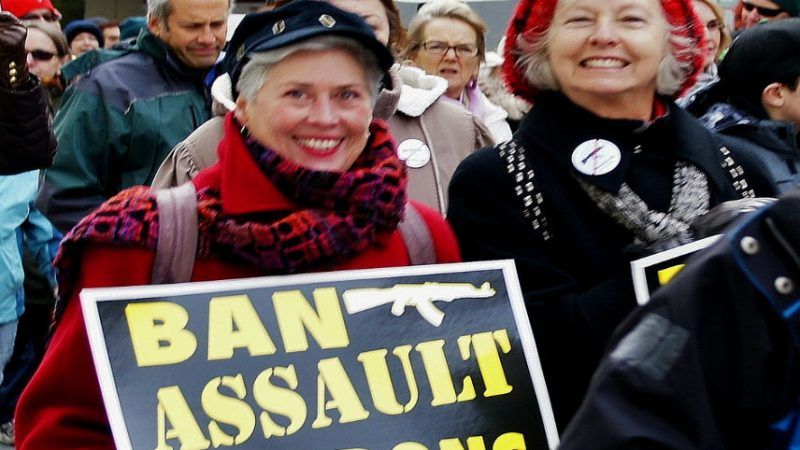Dianne Feinstein Touts Research Claiming the Assault Weapon Ban Reduced Mass Shootings
How to make an assault weapon ban look effective: include handgun murders

After an AR-15 rifle was used to murder 17 people at a high school in Florida, politicians have been eager to consider a new ban on the AR-15 and similar weapons.

Some of the research they're relying on comes from Louis Klarevas, author of the book Rampage Nation: Securing America from Mass Shootings. Sen. Dianne Feinstein (D-Calif.) showed President Donald Trump a chart derived from Klarevas' work this week when leaders gathered to think about how to restrict our Second Amendment rights. The chart purported to show the effectiveness of the 1994–2004 ban on the sale and manufacture of such weapons in reducing "gun massacres."
Prior to this, no one even on the pro-gun-control side ever thought that ban had much effect on anything at all, mostly because of the vanishingly small amount of times such weapons are ever used to harm another human being. As Jon Stokes ably explains at the Los Angeles Times, Klarevas and Feinstein are able to insist that the ban produced "a remarkable 37% decline in mass shooting fatalities" only by ignoring the fact that both before or after the ban, such weapons are hardly used to kill anyone. "Klarevas and his allies are taking an apparent drop in fatalities from what are mostly handgun shootings (again, pre-ban as well as post) and attributing this lowered body count to the 1994 legislation," Stokes explains.
Klarevas also cherry-picked to get an apparently impressive result from the assault weapon ban by adopting an unusual definition of "mass shooting." If he had "chosen the most widely accepted threshold for categorizing a shooting as a 'mass shooting'—four fatalities, as opposed to Klarevas' higher threshold of six—the 1994 to 2004 drop in fatalities disappears entirely. Had Klarevas chosen a 'mass shooting' threshold of five fatalities instead of six, then the dramatic pause he notes in mass shootings between 1994 to 1999 would disappear too."
As I explained in my Reason feature "You Know Less Than You Think About Guns," the available data about gun laws often involve whole numbers too small for social science to bring to bear anything like accurate or reproducible knowledge. This is especially true when it involves the sort of rifles that can be used for mass shootings but in reality hardly ever are. (They are certainly not necessary for high-casualty shooting events. In the highest-fatality campus shooting, at Virginia Tech in 2007, the killer used pistols.)
In Klarevas' graph, Stokes explains, "five mass shootings…took place with 'assault weapons' in the decade before the ban, and three…took place during its tenure. These numbers are far too small for any sort of statistical inference, especially if you're trying to build a case for banning tens of millions of legally owned rifles."
Show Comments (161)